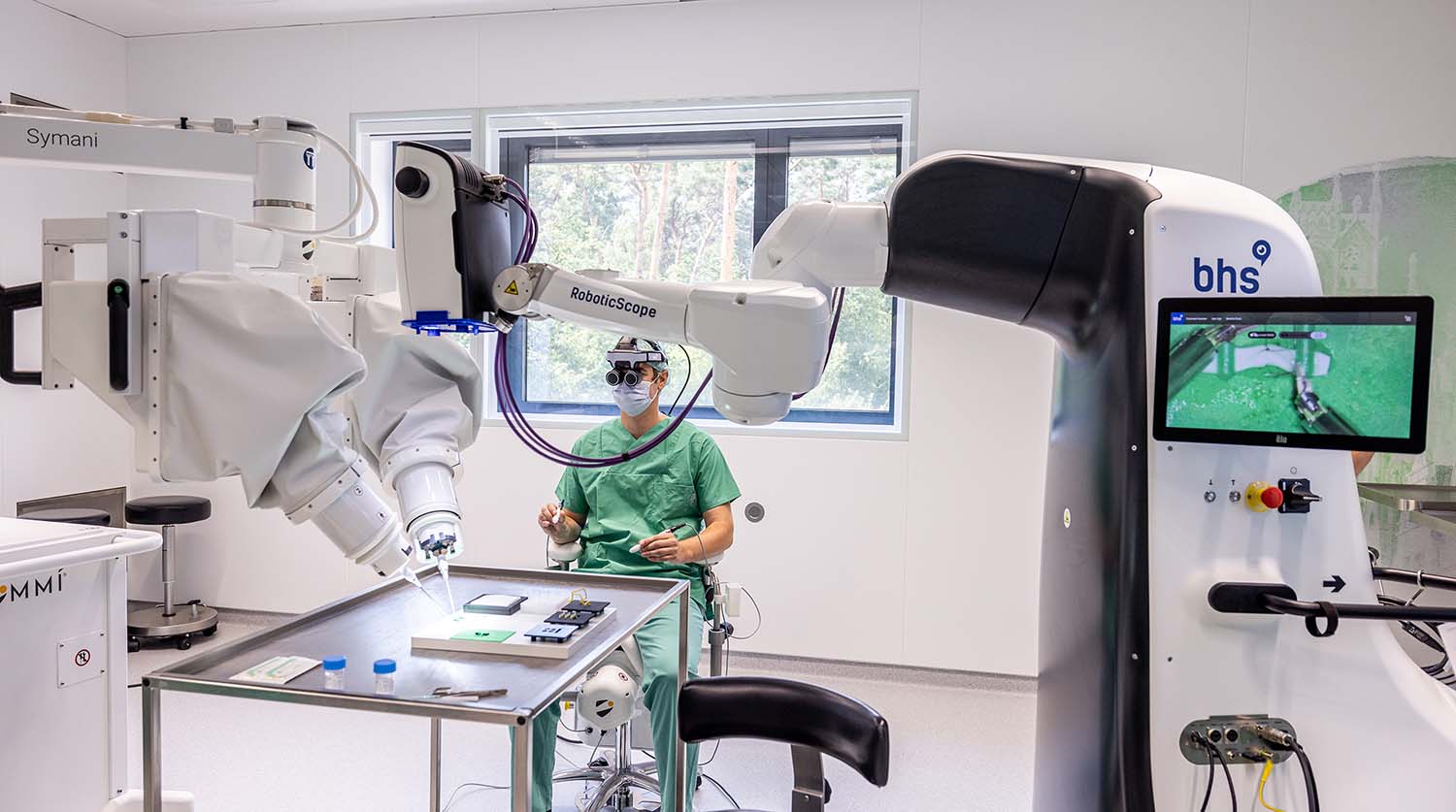|
Listen to this article  |

Dr. Maximilian Kückelhaus presenting the Symani Surgical System in a dry-run training session. The operations robot on the right is networked with the robotic microscope on the left. | Source: University of Münster
Researchers at the University of Münster’s Center for Musculoskeletal Medicine have completed five surgeries over the course of two months using their Symani Surgical System. The system performs completely robot-supported microsurgical operations on humans.
The system uses a unique operations robot specially designed for microsurgery, which is networked with a robotic microscope. These two robots make it possible for the surgeon to be completely taken out of the operating area.
“This new method for operations enables us to work with a much higher degree of delicacy and precision than is possible with conventional operating techniques,” Maximilian Kückelhaus, a scientist who led the team, said. “As a result, less tissue is destroyed and patients recover faster.”
The Symani Surgical system can be used for a number of operations, including complex breast reconstruction for breast cancer patients and tissue transplants for patients who have suffered accidents. Using the system, surgeons can join up to the finest anatomical structures, like blood vessels nerves or lymphatic vessels, which often have a diameter of just 0.3 mm.
During surgery, the robot uses an electromagnetic field and joysticks to adopt human hand movements. The robot mimics an operating surgeon’s movements and reduces them in size by up to 20 times with tiny instruments. This process completely takes out any shaking present in human hands.
The robotic microscope is then connected to the operation robot. The microscope shows the area being operated on via a 3D augmented reality headset with two high-resolution monitors. The headset has binoculars that combine the real world with virtual information. This allows the surgeon’s head movements to be recorded and transferred to the robot, which makes complicated viewing angles possible. The surgeon can also access menus and perform functions without using their hands.
The system also allows surgeons to maintain a more relaxed posture during surgery. Typically, surgeons could be in strenuous postures for several hours while performing surgery.
“As we can now operate on patients in a remote fashion, we have much better ergonomics,” Tobias Hirsch, the Chair of Plastic Surgery at Münster University, said. “This in turn protects us from fatigue, and that means that our concentration can be maintained over a period of many hours. In initial studies involving the systems, before they were used in operations, we were already able to confirm the positive effects on the quality of operations and on ergonomics.”
The team, led by Kückelhaus and Hirsch, plans to continue performing surgeries in the coming weeks, and collect data that they will evaluate in scientific studies.
Credit: Source link


Comments are closed.